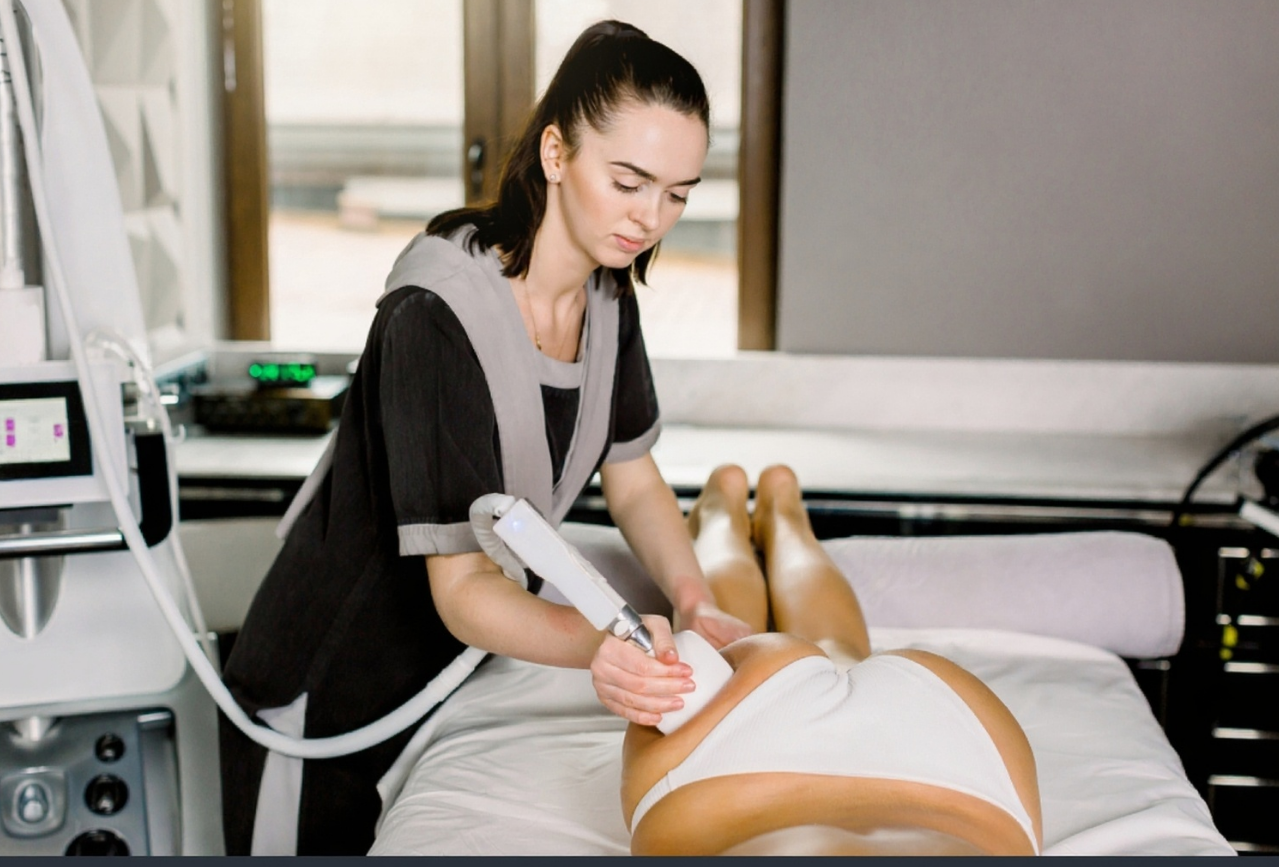RF Microneedling vs. Derma Roller: Which Skin Rejuvenation Treatment is Right for You?
When it comes to skin rejuvenation treatments, two options have become increasingly popular for improving skin texture, reducing fine lines, and addressing scarring: RF Microneedling and the Derma Roller. While both methods involve microneedling, they differ in their technology, technique, and effectiveness. So, how do you decide which treatment is right for you? Let’s compare both to help you make an informed choice.
What is RF Microneedling?
RF Microneedling combines traditional microneedling with radiofrequency (RF) energy to enhance the results. During the procedure, tiny needles create micro-injuries in the skin to stimulate collagen production. However, what sets RF Microneedling apart is the addition of RF energy. As the needles penetrate the skin, the RF energy is delivered deep into the dermis, promoting tighter, smoother skin by boosting collagen and elastin production.
What is a Derma Roller?
A Derma Roller is a handheld device with a roller covered in tiny needles. The device is used to create micro-injuries in the skin, which triggers the body’s healing response and promotes collagen production. Derma rolling is a more manual, at-home version of microneedling. It can also be used professionally, but the needles are typically shorter compared to RF Microneedling, making it less intense.
Key Differences Between RF Microneedling and Derma Roller
- Technology & Depth:
-
- RF Microneedling: Utilizes radiofrequency energy to enhance the microneedling process, allowing deeper penetration into the skin (up to 3mm). The RF energy stimulates collagen and elastin production at multiple layers of the skin, leading to more significant tightening and rejuvenation.
- Derma Roller: The depth of penetration depends on the needle size used, typically ranging from 0.25mm to 2.5mm. It doesn’t include RF energy, meaning its results are generally more superficial.
- Treatment Intensity:
-
- RF Microneedling: This treatment is more advanced and can reach deeper skin layers, making it ideal for tackling deeper wrinkles, scars, and skin laxity. It is generally performed by professionals in a clinical setting.
- Derma Roller: While effective, the Derma Roller is less intense and can be done at home with the right needle size (though professional treatments can offer deeper penetration). It’s suitable for mild skin concerns like surface wrinkles, light scarring, or uneven skin texture.
- Pain and Downtime:
-
- RF Microneedling: Because it goes deeper into the skin and uses heat from the RF energy, there may be some discomfort during the treatment. However, numbing creams are usually applied, and the recovery time is minimal (1-3 days with redness or mild swelling).
- Derma Roller: Generally, this treatment causes minimal discomfort, though deeper needle lengths can feel more intense. There may be slight redness or irritation afterward, but it usually subsides within a few hours to a day.
- Results and Effectiveness:
-
- RF Microneedling: This treatment delivers more dramatic results, particularly for stubborn issues like deep wrinkles, acne scars, and skin laxity. The RF energy ensures that collagen production is enhanced more effectively, giving long-lasting, noticeable improvements in skin texture and tone.
- Derma Roller: While effective, Derma Rolling provides more gradual results. It is a great option for those looking for an at-home solution to improve skin texture, but it’s not as powerful for treating deep wrinkles or severe scarring.
Who Should Choose RF Microneedling?
RF Microneedling is best suited for individuals with moderate to severe skin concerns, such as:
- Deep wrinkles or fine lines
- Acne scars or surgical scars
- Stretch marks
- Skin laxity (loose skin)
- Sun damage and pigmentation
If you’re looking for long-term, significant improvements and are willing to invest in a professional treatment with minimal downtime, RF Microneedling may be the right choice for you.
Who Should Choose a Derma Roller?
The Derma Roller is a great option for those looking for mild to moderate skin improvement. It’s ideal for individuals who:
- Want to improve skin texture and tone
- Have light scarring or mild acne scars
- Are looking for an affordable, at-home treatment
- Have sensitive skin and prefer a less invasive option
If you're just starting with microneedling or want to maintain healthy skin without the intensity of RF energy, the Derma Roller offers a simple solution.
Conclusion: Which Treatment is Right for You?
- If you have mild skin concerns and are looking for an affordable, at-home treatment, the Derma Roller could be a great choice. It’s a simple and accessible option to improve overall skin texture and address superficial imperfections.
- If you’re dealing with deeper wrinkles, scars, or skin laxity, or if you’re looking for a more advanced treatment with more noticeable results, RF Microneedling is likely the better option. It’s a professional treatment that works deeper in the skin, offering enhanced results with minimal downtime.
Ultimately, the best choice depends on your skin’s needs, your budget, and whether you prefer at-home treatments or professional care. Both treatments can help you achieve smoother, healthier-looking skin, but their approaches and effectiveness vary.






